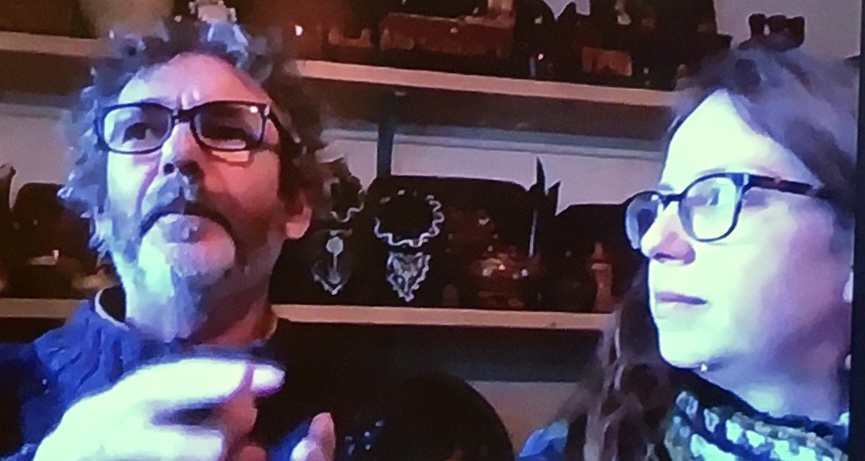Leach Pottery- Doug Fitch and Hannah McAndrew: An Ongoing Devotion.
25 February to 30 April 2023 St Ives, Cornwall, UK
Online 15 May to 11June
The Private View gave a great sense of occasion for those present. The pots looked sparkling and delicious as they are so well lit, drinks were flowing, with nuts and crisps to nibble and there was an inclusive atmosphere where one could strike up conversation with a stranger in the small gallery.
To top this the two potters appeared online to convey their special enthusiasm for the tradition of slip decoration, all the way from Scotland and after that you could take a turn with the headphones to speak to them privately.
These two are a couple and say that potting ‘isn’t our job, it is our very being’.
Prices began at £35 so many were tempted to buy.
I liked everything but particularly the black plates which set off the colours alluringly and the assured slip trailed drawing of birds or tulips.
There were tall sinuous vessels and crisper forms for the planting of bulbs.
There were rounded vases very satisfying to hold and large chargers that look too good to use for anything.
One plate had a particularly bold design that looked very modern and as if based on something biological.
It made me want to seize a slip trailer and try it out for myself.
Leaving in a euphoric ceramic dazzled mood I realised I had not worked out which of the two made which pots.
And I was carrying a perfect small rich honey yellow vase with beautifully placed vegetation decoration which turned out to be by Hannah.
I gather there is a stock to replenish from when sales are made but you might want to make up your mind quickly if you want to secure a purchase.
Locals can obtain free entry with a card to the show and the museum, which not many people may know.
















